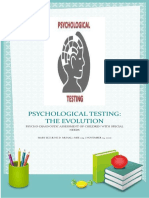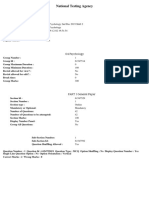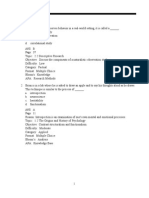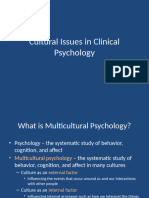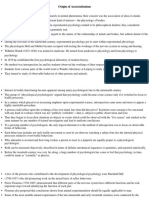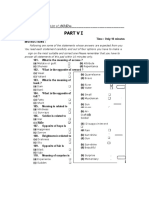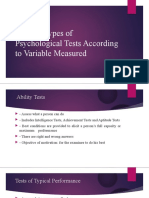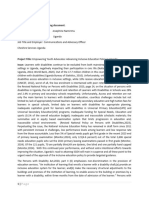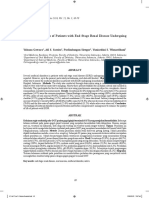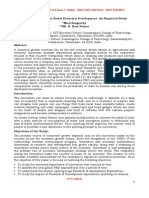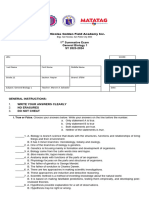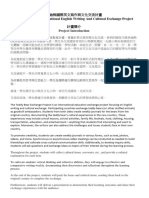0% found this document useful (0 votes)
352 views88 pagesTesting Intro 1
Psychological testing involves administering standardized tests to objectively measure samples of behavior in order to assess psychological constructs about an individual. There are several types of psychological tests that are used for various purposes, including IQ tests, personality tests, neuropsychological tests, and diagnostic tests. Psychological tests aim to be standardized, objective, reliable, and valid according to the principles of psychological testing.
Uploaded by
Dania KhanCopyright
© © All Rights Reserved
We take content rights seriously. If you suspect this is your content, claim it here.
Available Formats
Download as PPTX, PDF, TXT or read online on Scribd
0% found this document useful (0 votes)
352 views88 pagesTesting Intro 1
Psychological testing involves administering standardized tests to objectively measure samples of behavior in order to assess psychological constructs about an individual. There are several types of psychological tests that are used for various purposes, including IQ tests, personality tests, neuropsychological tests, and diagnostic tests. Psychological tests aim to be standardized, objective, reliable, and valid according to the principles of psychological testing.
Uploaded by
Dania KhanCopyright
© © All Rights Reserved
We take content rights seriously. If you suspect this is your content, claim it here.
Available Formats
Download as PPTX, PDF, TXT or read online on Scribd
/ 88
